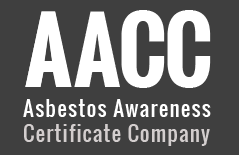
Asbestos Awareness - For All Who Work in Schools: Why? Asbestos is Found in 75% of State Schools
Asbestos awareness is crucial for everyone working in schools, as approximately 75% of state schools in the UK contain asbestos. While asbestos may not pose an immediate risk if left undisturbed, it is vital that rigorous monitoring and inspection are in place. This ensures that any potential risks are controlled, and those working or studying within school premises are protected from exposure to harmful asbestos fibres.
Parents need the reassurance that the health of their children is not at risk, and teachers, administrative staff, cleaners, and other school employees must be safeguarded from the dangers of asbestos exposure. Unfortunately, many schools across the UK are home to asbestos-containing materials (ACMs) that were commonly used in construction during the mid-20th century.
A high proportion of the UK's school buildings were constructed or refurbished during a time when asbestos use in construction was at its peak. In 2004, the Health and Safety Executive (HSE) provided insight into the extent of asbestos in UK schools:
"Of the approximate 20,400 primary schools and 3,400 secondary schools in the UK, some 13,000 were built between 1945 and 1974, when the use of ACMs (Asbestos Containing Materials) in building was at its peak. Many other school premises would have been refurbished during or since that period, providing the potential for the introduction of ACMs, such as lagging, ceiling panels, partition walls, and sprayed coatings."
The Devastating Impact of Asbestos in Schools
The health risks associated with asbestos exposure cannot be understated. More than 140 schoolteachers have died from mesothelioma, a cancer that is almost exclusively caused by asbestos exposure, in the past ten years. Additionally, an unknown number of cleaners, administrative staff, caretakers, and other school employees, such as dinner ladies, have also died from asbestos-related illnesses. This stark reality underscores the critical need for asbestos awareness in schools and the importance of implementing proper safety measures.
Although the presence of asbestos in schools doesn't automatically pose an immediate danger, it represents a significant potential hazard if the materials are disturbed, leading to the release of deadly fibres into the air. Children, teachers, and staff could all be at risk without proper asbestos management and awareness.
Much of the Asbestos Remains in Schools Today
Despite the known risks, much of the asbestos installed in schools remains to this day. This is partly due to the fact that asbestos, if in good condition and undisturbed, can be safely managed through monitoring and encapsulation. However, any damage or deterioration of ACMs in schools can lead to the release of harmful asbestos fibres, making awareness and ongoing inspection crucial.
Asbestos was used in a wide variety of applications in school buildings, and some of these materials may still be in place today. Common uses of asbestos in schools include:
- Walls
- Ceilings
- Suspended floors
- Acoustic insulation
- Fire insulation
- Loft insulation
- Damp insulation
- Storage heaters
- Pipe/boiler lagging
- Roofs
- Window sills
- Guttering
- Floor tiles
- Doors
All types of asbestos were used in these applications, with the primary aim of improving fire resistance, soundproofing, and insulation. However, as these materials age, they become more susceptible to damage, especially in busy environments like schools where maintenance work and regular use may disturb ACMs.
The Importance of Regular Monitoring and Inspection
Given the high presence of asbestos in schools, regular monitoring and inspection of asbestos-containing materials are essential to ensure they remain in good condition. If asbestos is identified, it should either be encapsulated to prevent damage or, if it poses a high risk, removed by licensed professionals.
It's also vital to communicate the presence of asbestos to anyone who may work in or near areas that contain ACMs. This includes maintenance staff, contractors, and school employees. All staff should be aware of the potential hazards and be trained in how to avoid disturbing asbestos during their routine activities.
Furthermore, parents must be reassured that schools are taking appropriate steps to manage asbestos safely and that their children's health is not being compromised by hidden risks within the building. Clear and transparent communication with parents about the presence and management of asbestos in schools is key to maintaining trust and ensuring the safety of all who use the building.
Conclusion
Asbestos awareness in schools is not just important—it is essential for the safety of students, teachers, and staff. With asbestos still present in many school buildings across the UK, rigorous monitoring, clear communication, and proper management are necessary to prevent exposure to harmful asbestos fibres. While asbestos may not pose an immediate threat, ensuring that all ACMs are regularly inspected, maintained, and, where necessary, removed is critical to safeguarding the health of everyone in the school environment.
If you work in a school or are responsible for school maintenance, it's vital to be aware of the risks asbestos poses and to take proactive steps in managing and monitoring ACMs. Asbestos awareness training for school staff and maintenance workers can help ensure that asbestos is managed safely and effectively.



